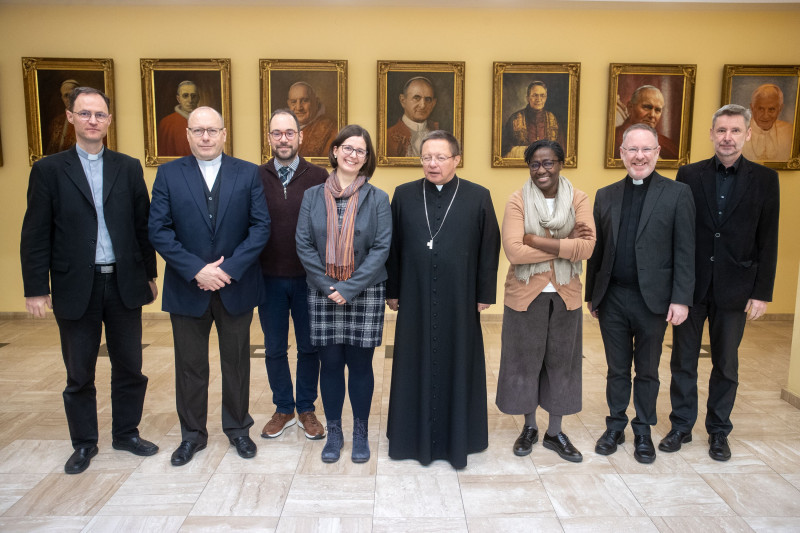
Lea Schlenker (fourth from the left) with members of CEC–CCEE Joint Working Group
The Charta Oecumenica is getting a makeover—and churches across Europe have already been involved in a very positive way.
While it’s a complex document, at its heart the Charta has a straightforward aim: to preserve and develop fellowship among churches. The original Charta Oecumenica is a joint document developed by the Conference of European Churches (CEC) and the Council of European Bishops’ Conferences (CCEE).
Signed by the presidents of the two organisations in 2001, it became a foundational document for ecumenism in Europe.
And it made a difference at the grassroots—even for people who haven’t heard of it, explained CEC Co-Chair of the Charta Oecumenica Working Group Lea Schlenker.
“The Charta changed relationships quite a bit and opened up new church agreements,” she said. “In some regions, it even contributed to the mutual recognition of baptism.”
Nearly 25 years later, CEC and CCEE jointly asked the question: how does this document still speak to us? The two organisations decided together that it was time to update the Charta so it might speak into ecumenism—and to the needs in the world—today.
The Charta is divided into articles that move into commitments by the churches. “It makes very practical and useful recommendations for ecumenical conversations and cooperation,” said Schlenker. “It was always meant as a tool and a resource.”
With an updated version to be released on 27 April, the goal is a newly fruitful Charta.
A changing Charta
The biggest changes in the updated Charta are ones that highlight and augment themes already implicitly mentioned in the original document.
"Peace and reconciliation were mentioned but we decided to highlight them even more, so we added another chapter to the article related to peace and reconciliation,” said Schlenker. “The updated version also engages in a more amplified way with migrants and refugees.”
In addition, two new sections—one related to youth and one other to new technologies—have been added.
Long but meaningful road
The first draft of the revised Charta Oecumenica was released in March 2024 after being started by CEC and CCEE. The drafting committee—comprised of three members of each organisation plus consultative experts—received more than 450 pages of responses coming from more than 70 churches and church bodies from all parts of Europe.
“We had a really wide response—which we didn’t expect—and that was very encouraging,” said Schlenker. “In addition, these responses were really constructive and very clear so they influenced the final document significantly.”
After the document will be signed by the presidents of CEC and CCEE on 27 April, the revision process moves into what’s called a “reception” process.
In the wider scheme of updating the Charta, “It’s more like a semicolon than a full stop,” explained Schlenker. “What counts now is how the churches will receive the texts.”
For Schlenker and others involved in revising the Charta, the journey has been intense, but very inspiring.
“We are looking forward to how the churches engage in the text,” she said.
The feedback they’ve received so far has been constructive, added Schlenker. “Churches gave very specific suggestions, and that’s something that I really appreciate,” she said. “They were able to engage in a very nurturing way.”